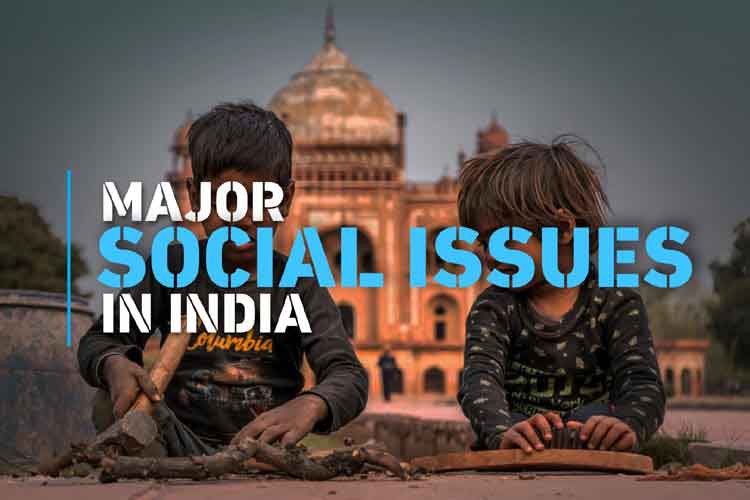
Current Social Causes In India
Published by MazherKhan 2022-11-23
Religious beliefs are deeply ingrained in Indian society. Hindus, Muslims, Jains, Sikhs, and Parsis are all represented. All of this contributes to the socio-cultural diversity of the country. Major social issues in India are also based on its people's religious rituals and beliefs. Religion and culture are essential in combating many social problems and crises in Indian society.
In India, there are a number of major social issues that have evolved over time and still exist in some form today.
Gender Issues: Gender is a major social issue in India, giving rise to a variety of crimes in our society. In all professions, men and women have equal rights under our constitution. Women now have the right to vote, inherit, and own property. They face discrimination in several areas of India, including health, education, and employment. Females are obligated to pay the dowry and must leave their parents' home after marriage. Furthermore, parents want male children to protect them in their old age.
Because they are females, many female newborns are still aborted, abandoned, purposefully ignored, and underfed.
Following independence, several pieces of legislation were enacted to advance the interests of women and combat this social issue in India. Marriage, asset inheritance, divorce, and dowry are all governed by these norms. Despite these constraints, women continue to face significant discrimination.
Examples of Gender Issues in Indian Society:
According to the Economic Survey report for 2017-18, India has 63 million missing women. Their deaths were the result of foeticide or infanticide. According to the World Economic Forum's "Global Gender Parity Report," India ranks 87th.
Instances Showing Gender issues in Indian Society:
According to the 2017-18 Economic Survey report, India has 63 million missing women. Foeticide or infanticide caused their deaths.
According to the World Economic Forum, India ranks 87th in the "Global Gender Parity Report.”
Though women are empowered to work in any profession, women still face sexual harassment at workplaces.
Government’s actions to overcome these Gender issues:
To overcome the gender gap, the Indian government created the 'Beti Bachao, Beti Padhao' initiative.
By implementing behavioral change in society, the government conducts awareness programs to address these social issues in India.
To provide equity and justice to women, the government of India approved the Triple Talaq Bill, which makes all talaq declarations, both written and electronic, null and invalid.
A law was enacted by the government in 2013 that prohibits, prevents, and remedies workplace sexual harassment. It attempts to defend women's rights in any job, in whatever capacity.
Poverty occurs
when a household is unable to meet its basic survival needs, such as food, clothing, and shelter. It is one of India's major social issues and has been a source of concern since the country's inception. The country is still impoverished in the twenty-first century.
The disparity between haves and have-nots in India is enormous. While the economy has shown some clear signs of development over the last two decades, this progress has been uneven across various sectors or areas. Gujarat and Delhi are growing faster than Bihar and Uttar Pradesh.
Almost half of the population lacks adequate shelter and sanitation, communities lack a reliable water supply, and villages lack secondary schools and proper roads. The government's designated agencies do not even keep a poverty list in some parts of society, such as Dalits. They are socially and economically disadvantaged groups. The government subsidy system, which has leakages in the distribution system, complicates and worsens the situation.
Instances Showing Poverty issues in Indian Society:
According to a World Bank Brookings Institute analysis, only 73 million individuals are in the poorest of the poor ranking as of May 2018.
According to the research, 44 individuals are lifted out of poverty in India every minute.
In 2022, 50 million people will escape poverty if the current growth rate continues.
Government’s actions to overcome Poverty issues:
The Indira Awaas Yojna allows people from scheduled castes, scheduled tribes, emancipated bonded workers, and rural poor living below the poverty line to build houses (IAY).
The MGNREGA scheme in India went into effect in 2005. The policy guaranteed 100 days of paid work in the form of unskilled manual labor per fiscal year for each household.
Furthermore, in 2003, the government launched a food security program in which free food grains were distributed to priority and Antyodya households. This scheme covered 75% of the rural population and 50% of the urban population.
Health Issues:
The long-term success of a country is dependent on the availability of healthy human resources. With a deteriorating environment and an unhealthy lifestyle, health is rapidly becoming one of India's most pressing social issues. One of the recent social issues in India is the young generation's addiction to drugs and alcohol or drug abuse.
Drug abuse typically has a negative social impact on the community. The negative impact of drug abuse on the industry, education, and its involvement in violence, crime, financial difficulties, housing issues, homelessness, and vagrancy is significant. Alcoholism, on the other hand, is associated with excessive alcohol consumption. It is harmful to the health of the drinker and is classified as an illness by the medical community. Alcoholism can also cause depression and behavioral changes. This could affect his personal life as well as his interactions with friends and family.
Instances of Health Problems in Indian Society:
According to a study from the India State-Level Disease Burden Initiative, air pollution causes approximately 26% of premature deaths and disease burdens worldwide.
The primary cause of mortality in India is air pollution, which accounts for one out of every eight deaths.
Approximately 6 crore Indians are alcoholics, according to a recent study conducted by the Ministry of Social Justice and Empowerment.
More than 3 billion Indians use cannabis products.
In India, 8.5 lakh individuals use drugs.
Issues of Caste:
The Indian caste system is based on cultural traits like hierarchy, impurity, and cleanliness. It follows the principles of Karma and Dharma. The Scheduled Castes (SCs) category was added to the Indian constitution by the Indian government in 1935.
SCs currently account for 16% of Indians. The most significant challenges that Dalits face are discrimination in society and accountability.
However, the caste system continues to pose a threat to the country's national integration. The caste system exacerbates untouchability, child marriage, the sati system, prostitution, and other brutal and immoral societal behaviors.
Case Studies of Casteism in Indian Society:
The majority of lynchings were carried out because of bovine-related issues.
Government’s actions to overcome the casteism issue:
According to the directives of the Bombay and Madhya Pradesh High Courts, the Information and Broadcast Ministry has issued advice prohibiting the usage of the term "Dalit."
Another mandate from the Ministry of Social Justice and Empowerment was to use only the phrase "Scheduled Castes."
2022 Current Social Issues in India
The aforementioned social issues have existed in India for a long time. The Indian government has taken a number of steps to address these issues. However, as time has passed, social issues have evolved. The following are the current social issues in India 2022:
Education System:
Our education system has a serious problem, which is why it is one of the most prominent social issues in India today.
Its effects are already being felt in our culture. In a less educated society, our perspectives are less conventional. Our educational system has already come under fire. Education has the potential to address the root causes of any societal crisis.
Without education, India, where the majority of children are still employed as child laborers, cannot rise to the top of the world.
This deficiency leads to criminals, a bleak future, and even suicide.
Corruption:
This infamous issue, whether beneath or above the table, is the germ in Indian culture. Competing on a global scale necessitates a strong system. Bribery and corruption are prevalent in both public and private enterprises. It wreaks havoc on society and halts the country's progress. This major social issue in India exacerbates other issues in the country. Because one community's weight is heavier, there is no equality in that society, and prejudice results.
Overpopulation:
Overpopulation has been a major impediment to the country's progress and is currently one of India's major social issues. India has 1.3 billion people, making it the world's second most populous country. A problem like this stymies a country's economic progress. Housing, employment, and resource availability all increase as the population grows.
Unemployment:
With India's population growing, unemployment has become a major social issue. This issue has yet to be resolved. The majority of people in our country work on private farms, and there have been many people with unusual occupations. As a well-educated person, you must deal with the issue of unemployment. People are falling into poverty as a result of a lack of funds.
Crime or suicide will both rise.
India's Social Problems UPSC
Social issues in India are covered in the UPSC syllabus under the topic "Indian Society."Corruption, overpopulation, unemployment, and other issues are among them. These topics are thoroughly covered in the UPSC books and notes.
Aspirants preparing for the IAS prelims and mains exams should gain a thorough understanding of the various social issues in India covered in the syllabus as well as current events.
Practicing these questions will give aspirants an idea of the types of questions that will be asked in competitive exams.
Check out one of the sample questions on Indian social issues.
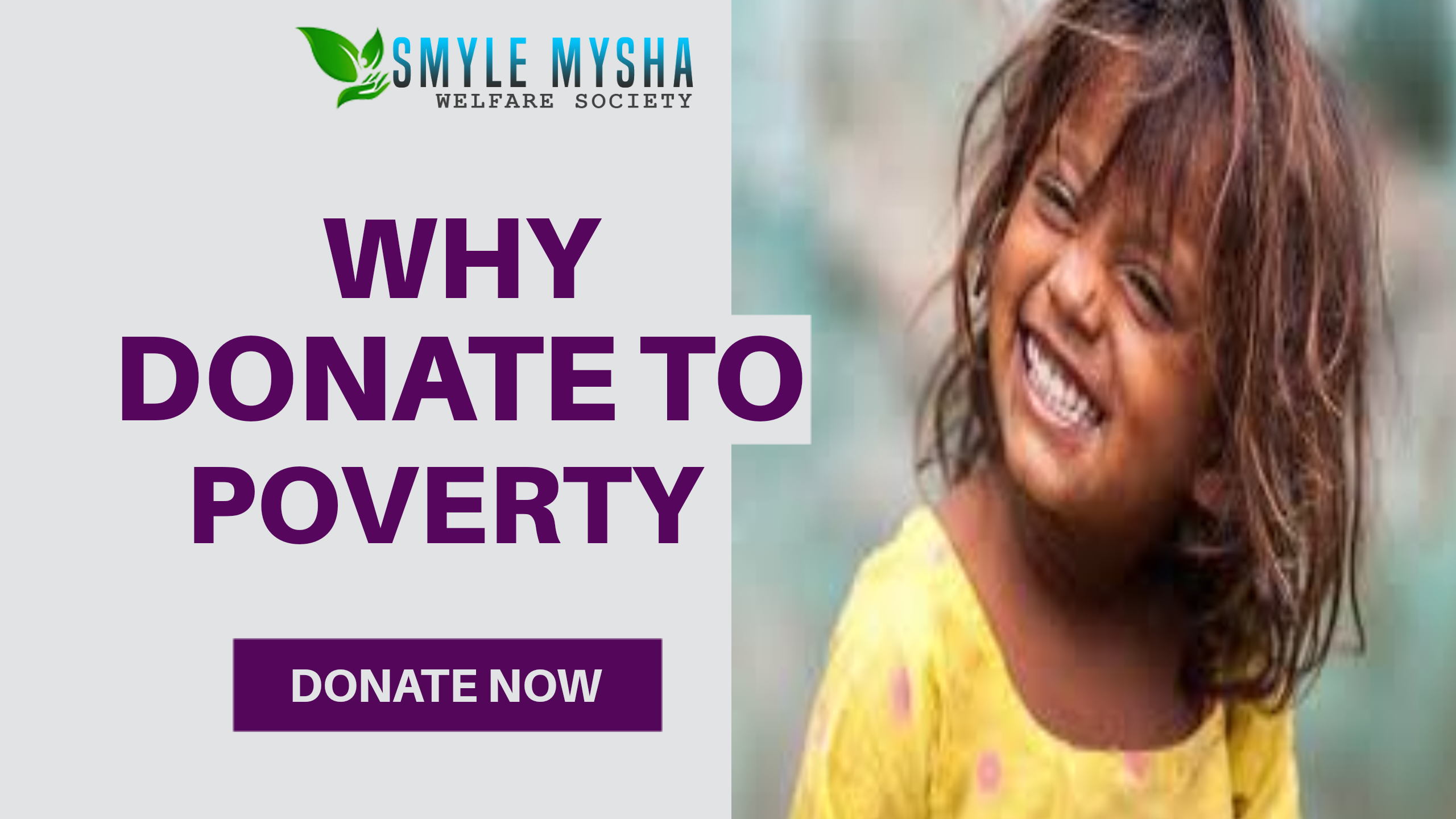
Why donate to poverty ?
Published by MazherKhan 2022-10-06
SMYLE MYSHA
Project Overview:
Smyle Mysha is now starting fundraising for poverty. Where we can feed the hungry, help the poorer & provide medical help to those who can’t afford the treatment. Also, we are about to start helping those needy students with a lucky draw yearly 10 at least for now to make them keep studying and help the generation in the future.
Objectives:
Medical help
Feed the hunger
Educational help
Requirements/Task(s):
Task 1 Increase the number of members for medical help volunteers.
Task 2 Increase the number of members for feeding the hunger.
Task 3 Increase the number of members for collecting data for needy educational help.
Task 4 Provide data on the most required health treatment for poor people.
Task 5 Get data on places where we can camp for medical help.
Task 6 Volunteer and their area details where they can camp to feed the hungry.
Task 7 Yearly Educational fees of 10 students by lucky draw.
Research & Area where we can start our work
As per our research. The whole world is under a critical epidemic phase, and our country India is also suffering and in real trouble in a few fields such as Medical help, Education & Hunger. We are just starting and forwarding our hand to them. Our hands will increase in numbers to help these people, not but at least we can provide relief to some.
Research in details
Research Hunger & Starvation
From one of the leading websites, the data is really shocking and scary. According to FAO estimates in ‘The State of Food Security and Nutrition in the World, 2020 report, 189.2 million people are undernourished in India. By this measure, 14% of the population is undernourished in India. Also, 51.4% of women of reproductive age between 15 to 49 years are anemic. Further according to the report 34.7% of the children aged under five in India are stunted (too short for their age), while 20% suffer from wasting, meaning their weight is too low for their height. Malnourished children have a higher risk of death from common childhood illnesses such as diarrhea, pneumonia, and malaria. The Global Hunger Index 2019 ranks India at 102 out of 117 countries on the basis of three leading indicators -- prevalence of wasting and stunting in children under 5 years, under 5 child mortality rate, and the proportion of undernourished in the population.
Key facts about hunger in India
India is home to the largest undernourished population in the world
189.2 million People i.e. 14% of our population is undernourished
20% of children under 5 are underweight
34.7% of children under 5 years of age are stunted
51.4% of women of reproductive age (15-49 years) are anemic
Let’s bring our hands out to least help some to decrease the number of these needy people.
Research details on medical issues
New Delhi: Some 2.4 million Indians die of treatable conditions every year, the worst situation among 136 nations studied for a report published in The Lancet.
Poor care quality leads to more deaths than insufficient access to healthcare--1.6 million Indians died due to poor quality of care in 2016, nearly twice as many as due to non-utilization of healthcare services (838,000 persons).
“For too long, the global health discourse has been focused on improving access to care, without sufficient emphasis on high-quality care,” Muhammad Pate, co-chair of the commission that produced the report, who is also chief executive of Big Win Philanthropy and former minister of state for health in Nigeria, said in a statement. “Providing health services without guaranteeing a minimum level of quality is ineffective, wasteful, and unethical,” he said.
Almost 122 Indians per 100,000 die due to poor quality of care each year, the study said, showing up India’s death rate due to poor care quality as worse than that of Brazil (74), Russia (91), China (46) and South Africa (93) and even its neighbors Pakistan (119), Nepal (93), Bangladesh (57) and Sri Lanka (51).
An estimated 8.6 million deaths in low- and middle-income countries every year are due to conditions treatable by healthcare, of which 5 million result from poor quality of care and 3.6 million from insufficient access to care, according to The Lancet Global Health Commission on High-Quality Health Systems, whose report has been published in the medical journal The Lancet on September 6, 2018. Source: The Lancet These deaths led to economic welfare losses of $6 trillion (Rs 429 lakh crore) in 2015, the commission estimated.
The total number of deaths from poor-quality care globally--5 million per year--is estimated to be five times as many as the annual global deaths from HIV/AIDS (1 million) and nearly three times more than deaths from diabetes (1.4 million), according to the study that was part of a two-year project that brought together 30 academics, policy-makers and health systems experts from 18 countries to examine how to measure and improve health systems’ quality worldwide.
Given the current global focus on universal healthcare (UHC), the commission found that expanded healthcare coverage does not always mean better quality. “The central role of quality is not yet sufficiently recognized in the global discourse on UHC and is underappreciated in many countries,” the report says.
“The impact of poor quality care goes well beyond mortality but can lead to unnecessary suffering, persistent symptoms, loss of function, and a lack of trust in the health system,” commission chair Margaret E. Kruk of Harvard T. H. Chan School of Public Health, Boston, USA, said in a statement.
“Other side effects are wasted resources and catastrophic health expenditures,” Kruk said, “Given our findings, it is not surprising that only one-quarter of people in low and middle-income countries believe that their health systems work well.”
So these are some of the points we are mentioning above. Now it turns to make us all get together and fight this situation or else it will eat humanity in a real quick time. Let’s join together and start working in such an area as well. A little help from some who do not even bother to think can give life to many who seek medical treatment.
Research data on illiteracy in India
Literacy is the bridge between misery and hope – Kofi Annan Yes, the fact, and statements are so true.
Literacy is also a harbinger of development. Some of the most developed nations in this world have exceptionally high literacy levels. USA and UK with 99% and China with 97%. However, India shows a complete opposite overview. It has the highest rate of illiterate adults, with an overall literacy rate standing at 77.7%. Over 287 million people in India are illiterate, and this amounts to 37% of the global total. Now, with such low rates and extreme illiteracy conditions, problems are out to emerge. In this article, I delve deeper into them and take a precise look at the ‘consequences’ of illiteracy.
Unemployment
No company wants to employ an illiterate person. Illiteracy has a direct impact on the high unemployment rate in India. Currently standing at 7.8%, a major chunk of the unemployed are illiterate people. Illiteracy has deemed them unable to find a job and earn. This causes poverty, which in turn causes illiteracy.
People are unable to afford education for their children, and they grow up illiterate. Thus, they are unable to find a job, and the cycle starts all over again. Reports show that 115 million people in India live below the poverty line, causing high illiteracy and unemployment rates.
Slow GDP Growth
GDP or Gross Domestic Product refers to a measure of the market value of certain goods. Countries with high literacy rates have a way higher GDP. The USA has a GDP of 20.54 lakh crores USD, whereas India was that of 2.72 lakh crores USD. Such a stark difference!
Illiteracy has a direct relation with this low GDP. Illiterate people have lesser access to education, growth, and opportunity. Thus they are unable to contribute to any form of GDP growth. Imagine if the 287 million people were literate and contributing to GDP, what the rates must have been!
Child Labor
Every 11th child in India is a victim of child labor. Over 10.1 Million kids are working in various industries to support their families. These sky-high rates are once again, a result of poverty caused due to illiteracy. Since their parents are illiterate and families live in poverty, they are stripped of a normal childhood and forced to work. If their parents were literate, they would’ve had a decent job, and they would’ve been in school and not the dump yards.
It’s solely due to the poverty caused due to illiteracy that they are forced to work in the form of child labor. Stated above are some of the major consequences of illiteracy in India. Illiteracy is an issue that can be controlled. If citizens set their thoughts on curbing it, it can very well be controlled!
As I know education is the key to success and children are the ones who can achieve this gold. Let’s make them get started to secure and make the future beautiful. It is time to get stand against this illiteracy. Shake hands and fight together.
Smyle Mysha is taking this initiative and the one-day whole country will come forward to work against these 3 critical issues in India.
Join Today.
Mr. MAZHER KHAN
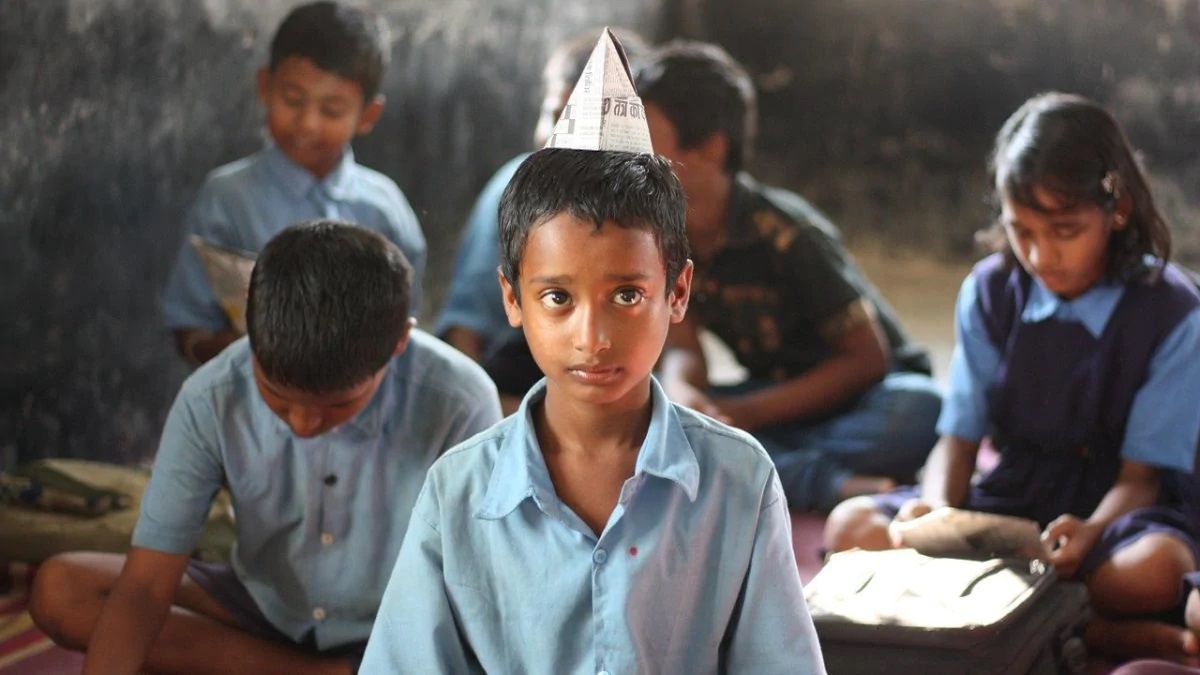
importance of Education in India
Published by MazherKhan 2022-10-03
Education plays a serious role in a nation’s development and maybe a basic right of each soul. The Asian country is the 2d largest inhabited country in the world incorporating an attainment rate of around seventy-four p.c. India’s attainment rate continues to rise, however, there are many countries within the country with low attainment rates. Since education is therefore essential for the event and growth of any country, in India, Kerala is topnotch in all states with the very best attainment rate of ninety-four followed by Lakshadweep at ninety-one.85%, Mizoram 91.33%, and province with the attainment rate of eighty eight.70%. Conversely, Bihar has a very cheap attainment rate of sixty-one.80% followed by the state of Arunachal Pradesh sixty-five.38%, Rajasthan sixty six.11%, and Jharkhand with an attainment rate of sixty-six. 41%. observing these attainment rate statistics, it's clear that Asian country has a larger want for improvement within the education system.
Education is vital for having awareness of nearly everything in life and it's a basic right of each creature. The education system is extremely advanced in urban square measures for folks with smart financial gain sources however nevertheless still must be improved for rural areas furthermore for people that are below the personal income. the academic Development of those 2 sections of the country determines the country’s growth. because the government already leads and initiated new programs to encourage folks for education still several obstacles stop these programs from being triple-crown. a number of the problems square measure lack of awareness, poverty, poor infrastructure and facilities, leading to an outsized range of individuals departure or not about to faculties. The female acquisition rate in the Republic of India is exactly low, which is another excuse for the low acquisition rate in the Republic of India. The male acquisition rate is eighty.89% however the feminine acquisition rate is .64%, that is clearly showing a spot of sixteen.25% between the 2 genders. To fill this gap and improve the feminine acquisition rate, awareness, encouragement, and appreciation have to be compelled to run to females to concentrate on education. making awareness, removing unimaginative thinking, and providing intercalary edges to females to encourage them to travel to high school, ought to be taken into thought for the effective development of the associate degree education system.
Education is significant for having awareness of nearly everything in life and it is a basic right of every creature. The education system is very advanced in urban sq. measures for people with sensible gain sources but even so, still should be improved for rural square measures moreover as for folks that are below the private financial gain. the tutorial Development of these two sections of the country determines the country’s growth. as a result of the govt. already leads and initiated new programs to encourage us to education still many obstacles stop these programs from being triple-crown. variety of issues unit lack of awareness, poverty, poor infrastructure, and facilities, resulting in associate degree outsize vary of people departure or not getting ready for college. The female acquisition rate in the Republic of Asian country is precisely low, that's another excuse for the low acquisition rate in the Republic of Asian country. The male acquisition rate is eighty.89% but the female acquisition rate is 64%, that's clearly showing a spot of sixteen.25% between the two genders. To fill this gap and improve the female acquisition rate, awareness, encouragement, and appreciation have to be compelled to run to females to consider education. creating awareness, removing unimaginative thinking, and providing added edges to females to encourage them to trip high school, have to be compelled to be taken into thought for the effective development of the academic degree education system.
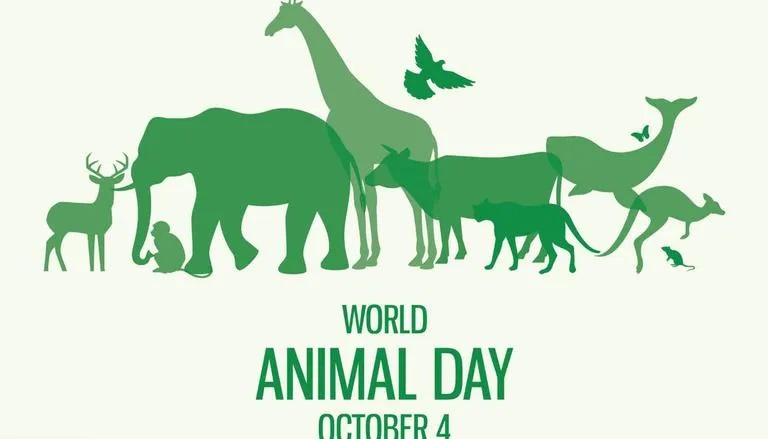
World Habitat Day, World nature day
Published by Rajan 2022-07-02
World Animal Day is celebrated on 4 October every year to raise awareness about improving the welfare standards of the animals around the world. There are several factors that lead to the origin of this day. Let us have a look!
World Animal Day celebrates the relationship between humankind and the animal kingdom. We can't ignore that animals play an important role in our lives. They not only provide support and enrich our lives but also give companionship and make us better human beings. This day provides us an opportunity to serve animals and be a part of something special.
The best part of this day is that everyone can celebrate it without any restriction of nationality, creed, religion, political belief, or ideology. Basically, this day is for those who care for animals; love them and of course for those who should care for these wonderful creations. There are several organizations, animal welfare groups, schools, charitable trusts, etc. that celebrate World Animal Day.
What is World Animal Day?
World Animal Day is a social movement in order to improve the lives of animals with the mission of welfare standards around the globe. For this several animal welfare organizations, community groups, youth, children’s clubs, etc. are encouraged. Several business organizations and individuals organize an event to draw attention to an animal issue and motivate people to come forward and save animals.
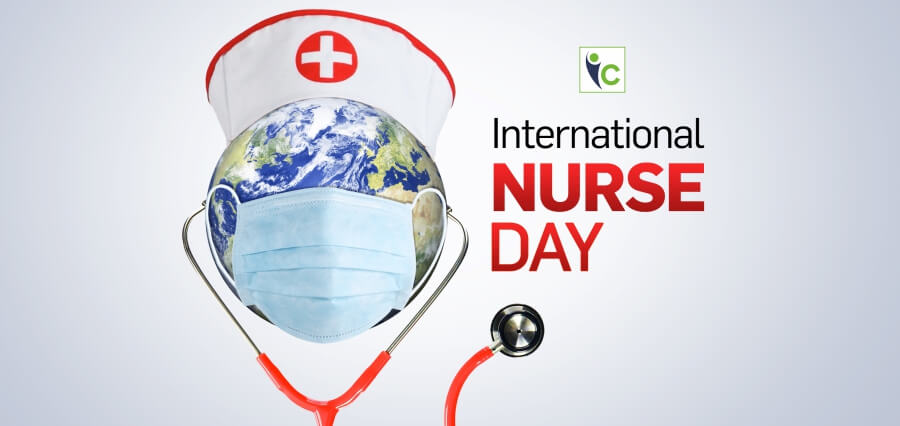
International Nurses Day 12 May
Published by Rajan 2022-06-22
Nurses are the medical community’s backbone. They play a critical role in providing assistance to those in need. Similarly, they are in charge of protecting people during the most vulnerable stages of their lives. They, on the other hand, do not receive the respect and admiration that they truly deserve. Several nurses have given up their personal lives to care for patients over the years, particularly during the COVID-19 pandemic. Like doctors, there were several nurses who sacrificed their lives for the sake of curing people and providing them with all the necessities. Thus, to honor their genuine effort and appreciate their selfless service, International Nurses’ Day is celebrated every year.
History of Nurses’ Day
Florence Nightingale was born on May 12, 1820, in Florence, Italy. She also had the nickname “The Lady with the Lamp.” As the founding philosopher of modern nursing and a British nurse, statistician, and social reformer, she was in charge of caring for British and allied soldiers during the Crimean War. International Nurses’ Day is celebrated on the 12th of May every year to commemorate her birth, as well as to honor nurses for their persistent efforts and services.
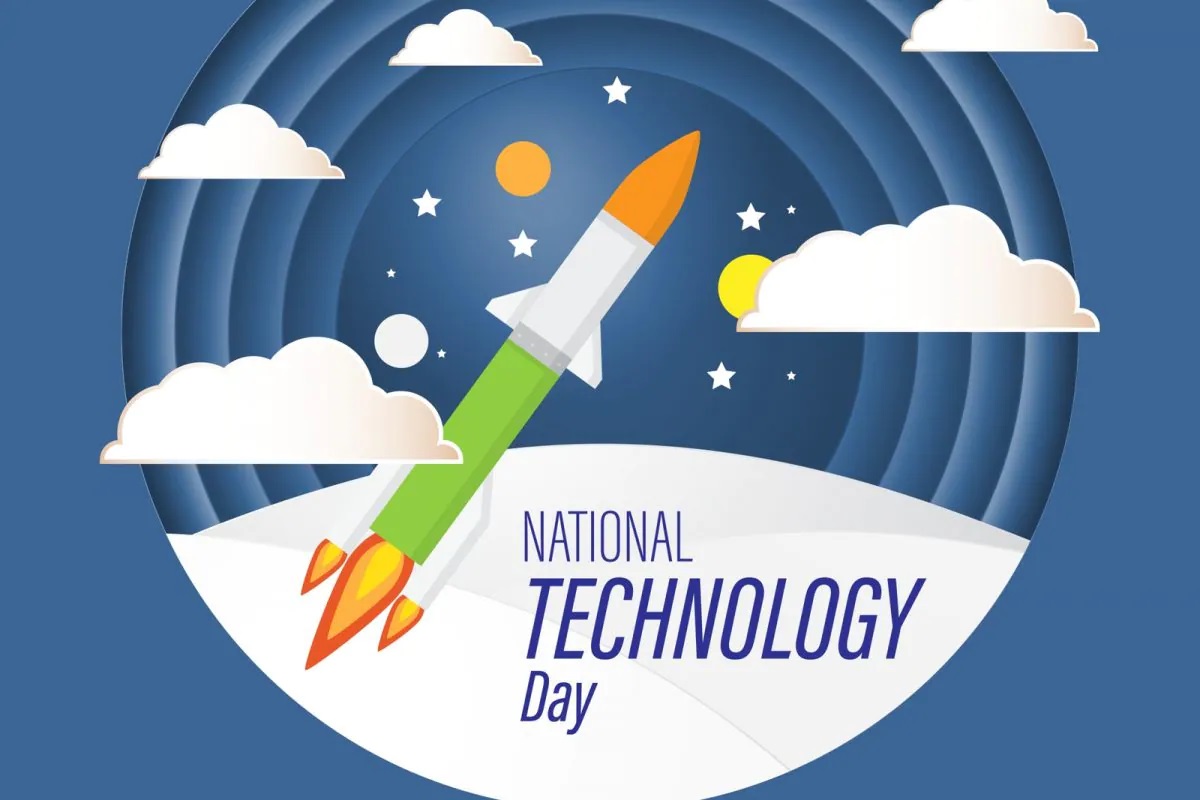
National Technology Day
Published by Rajan 2022-06-21
Technology Day
Technology is the process of applying scientific knowledge to improve the quality of human life and make the industry more efficient. While we may remember the launch of a satellite, we tend to forget the capabilities of the simple device that most of us carry. Yet, it is our window to the world. That’s what happens when technology becomes part of our life.
To honor the people who have made many things possible for us and acknowledge their achievements, India celebrates Technology Day on May 11th every year.
The remembrance is a tribute to all the scientists, engineers, and technologists in India for their significant role in its progress. The day also keeps us aware of the importance of technology in our daily life.
Technology Day: History
The Government of India chose May 11th, 1999 to be technology day. It marked the first anniversary of May 11th, 1998, an important day for Indian Scientists and Technologists. Three major feats were achieved on the day:
Nuclear tests were carried out in Pokhran, Rajasthan, under Operation Shakti. The day marked India’s entry to the very select world nuclear club.
The first indigenous developed aircraft, Hansa-3, soared to the Bengaluru skies. The two-seater light aircraft developed by the National Aerospace Institute was meant for flight training, espionage, and other missions.
The test launch of India’s first surface-to-air missile was also carried out on that day. It was a DRDO project as part of India’s Integrated Guided Missile program.
Technology Day: Events and Celebrations
The Technology Development Board, an autonomous body under the Ministry of Science and technology, gives away national awards to individuals/institutions for their contribution to science and technology.
Several lectures, seminars, and workshops are organized across the country by the government’s various science and technology institutions.
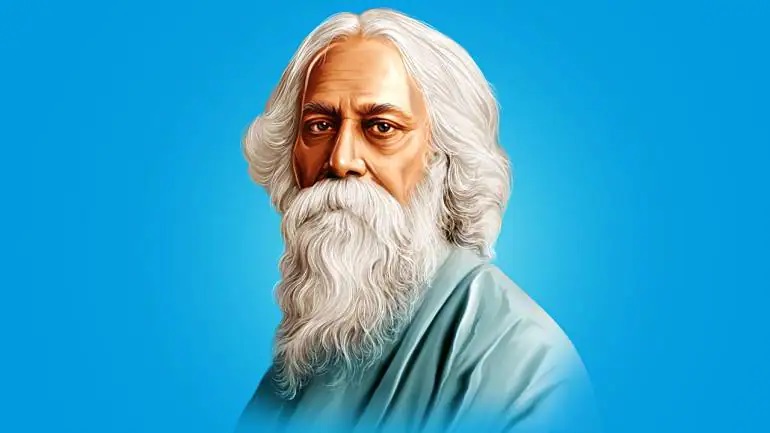
Rabindranath Tagore Jayanti
Published by Rajan 2022-06-21
Rabindra Jayanti is the birth anniversary of Rabindranath Tagore, the creative literary genius. A great poet, music composer, novelist, playwright, painter, humanist, philosopher, scholar and social reformer, Rabindranath was all in one.
Rabindranath was born on May 7th 1861. However, Rabindra Jayanti is celebrated on his birthday in the Bengali calendar, on the 25th day of Baisakh. Usually, the day falls on either May 8th or 9th.
Tagore’s writings brought in a distinct change in style, which was heavily influenced by the classical Sanskrit form. His writings had a colloquial flavor and expressed human sentiments, which touched people deeply. Rabindranath got the Nobel Prize for Literature in 1913 for his collection of poems titled Gitanjali.
Rabindra Jayanti Celebrations
Special programmes are organized on Rabindra Jayanti. Schools, colleges, local communities and several households celebrate the occasion with his songs, poetry recitations, and dance. In many places in Bengal, children go around their locality from early morning hours, singing Tagore songs.
Rabindranath: Glimpses of his Life
Youngest among his siblings, Rabindranath lost his mother at a very young age. His father used to travel a lot, and so he was mostly raised by his maids and servants.
Rabindranath Tagore began writing verses early, at the age of 8, but his father, Debendranath, wanted him to be a barrister. So he was sent to a public school in Brighton in England. Later, he enrolled for a degree in law at the University College of London. However, Rabindranath left London without completing the course and returned to India. While in London, he spent more time studying Shakespeare and moving around in literary circles, something that was close to his heart.
He was then sent to manage the family’s vast estates in Shelaidaha, now in Bangladesh. His benevolent attitude quickly made him a favorite among the ordinary people living in the estates. As a result, many of their dues were exempted. His stay in Shelaidaha was an excellent creative period for Rabindranath. References to the people and the region’s natural beauty found their reflection in many of his later creations.
Rabindranath: Interesting Facts
Two national anthems, Indian and Bangladeshi (Amar Sonar Bangla), are his creations.
Rabindra Nath was the first non-European to win a Nobel Prize.
We all refer to Mohandas Karam Chand Gandhi, the father of the nation as Mahatma Gandhi. It was Tagore who first called Gandhiji a Mahatma.
1919 he repudiated the knighthood given to him by the British Government as a protest against the Jallianwala Bagh killings.
He started an open school providing holistic studies and personal guidance at Shantiniketan in West Bengal in 1921. The school has now become a prominent University of India, Viswa Bharati.
Tagore’s work teaches us human values and cares for others in society. But unfortunately, translation issues limit his works to only a section of the people in India.
Do you know how crowdfunding is caring for the community in India? Check with Ketto. Ketto is an Indian online crowdfunding platform.